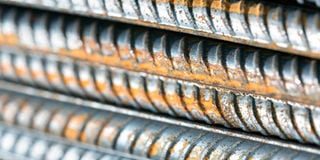Twisted steel bars banned in Uganda

Ribbed steel bars. The ribbed surface provides a better bond with the concrete compared to the twisted bar where the concrete may slip causing cracks. PHOTO | FILE
What you need to know:
- UNBS has banned the importation and production of the twisted bars while manufacturers have been given up to June 30 to clear their stock.
- Mark Otieno an engineer says that the collapse of a building is mostly related to poor cement ratios which delivers a weak building. He adds that a lot of buildings in Kenya that have been built using twisted bars have proved to be sturdier.
- The use of twisted bars started around the middle of the 20th century but by the 1980s and early 1990s most of the developed nations had already ceased their use due to these inadequacies preferring the deformed bars.
Uganda has banned the use of twisted steel bars in construction over inferior reinforced concrete strength, raising questions over the use of the bars in Kenya.
The construction sector in Uganda will going forward be required to use ribbed (deformed) steel bars which provide reinforced concrete strength.
Kenya has in the recent past experienced a string of building collapses thus raising questions on the use of sub-par building materials.
At the centre of the Uganda ban is what is referred to as concrete bonding. The ribbed surface provides a better bond with the concrete compared to the twisted bar where the concrete may slip causing cracks.
Deformed bars have ridges, projections or ribs on their surface to provide better anchoring for concrete.
“Internationally, twisted bars have been phased out for use in structural reinforcement of concrete due to their poor bonding and structural properties,” said Ben Manyindo, the executive director of the Uganda National Bureau of Standards (UNBS)
“Developments in the technology for the manufacture of steel reinforcement bars have made it possible to produce ribbed bars with superior strength and bonding properties.”
REINFORCED STRENGTH
UNBS has banned the importation and production of the twisted bars while manufacturers have been given up to June 30 to clear their stock.
While admitting that ribbed bars do offer better bonding, engineers have downplayed the overall danger in using twisted bars saying that a lot of buildings in Kenya are built using twisted bars and have stood the test of time.
Collins Indata a structural engineer says that a bar’s strength is set by the manufacturer. Two identical bars may be of the same tensile strength but a ribbed bar is more preferable as its skin friction gives it a superior bonding characteristic over the twisted bar.
“The difference is that ribbed bars offer better bonding with concrete when used as reinforcement and this increases the overall bearing capacity of the respective member where the bar has been used,” he says.
Mark Otieno an engineer says that the collapse of a building is mostly related to poor cement ratios which delivers a weak building. He adds that a lot of buildings in Kenya that have been built using twisted bars have proved to be sturdier.
“Professionally, I would advise clients to use the deformed bars because they deliver better value for money,” he said.
The use of twisted bars started around the middle of the 20th century but by the 1980s and early 1990s most of the developed nations had already ceased their use due to these inadequacies preferring the deformed bars.
Steel manufacturers in Kenya produce both twisted and deformed steel bars with the only requirement from the Kenya Bureau of Standards (Kebs) being that they are branded with the manufacturer’s logo.
This is to reduce cases of production of counterfeit bars that don’t meet set minimum standards.
Mr Manyindo said that their decision to ban the use of twisted bars draws from regional standards.
“It should be noted that the current East Africa Standard EAS 412-1&2:2013 does not provide for the use of cold-twisted bars for structural concrete purposes,” he said.
It remains to be seen if Kenya will follow Uganda and much of the international community in adopting the use of deformed bars as the industry standard.




